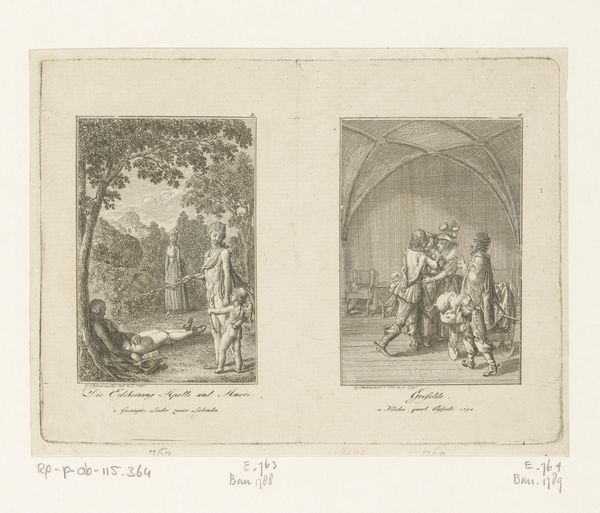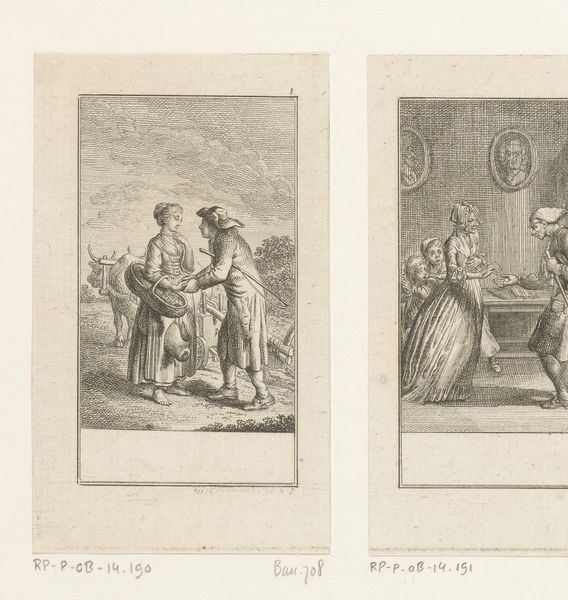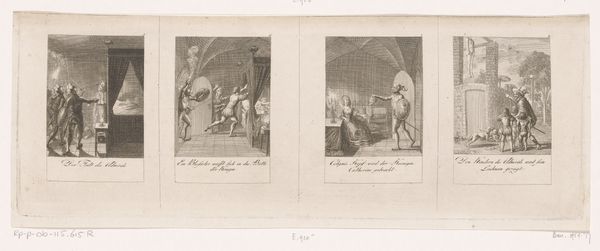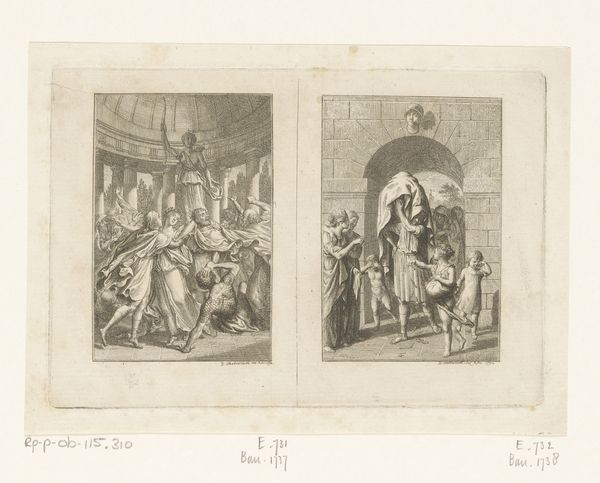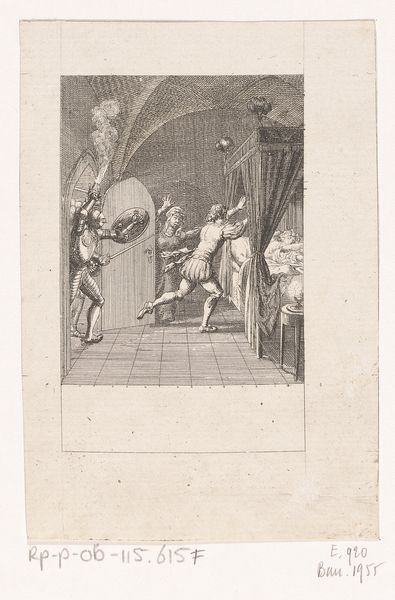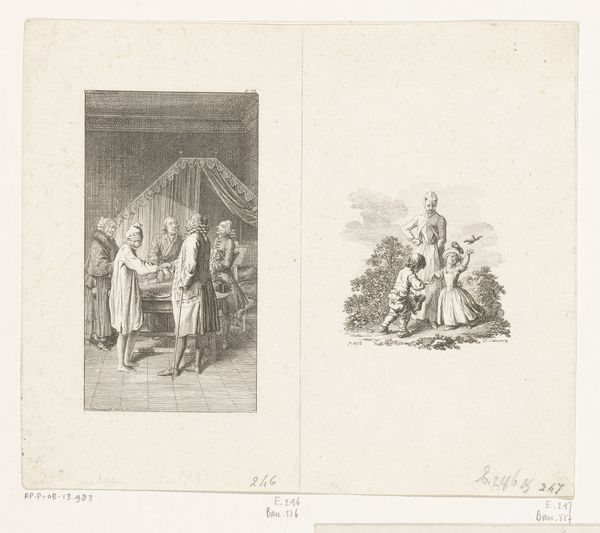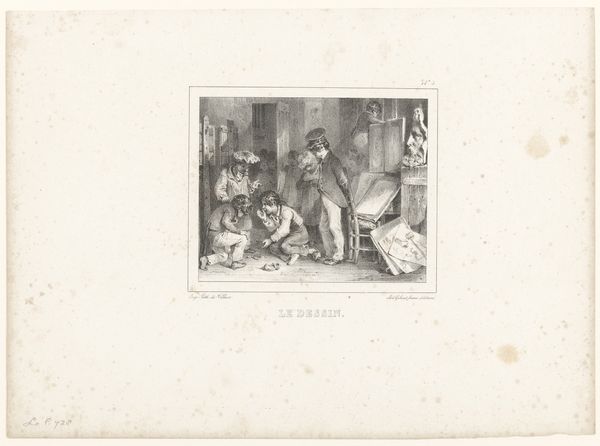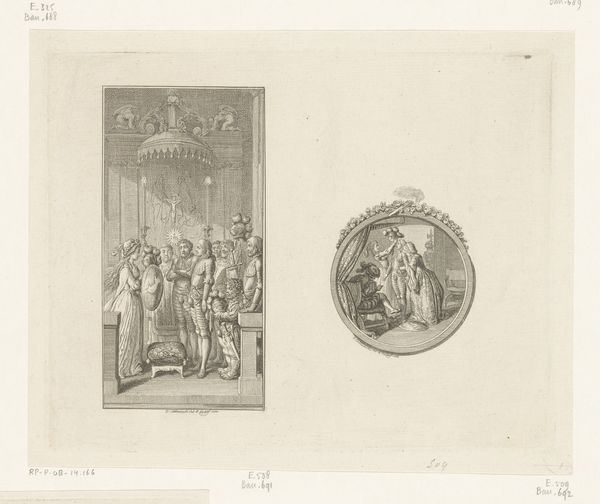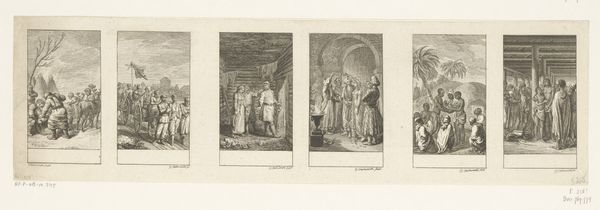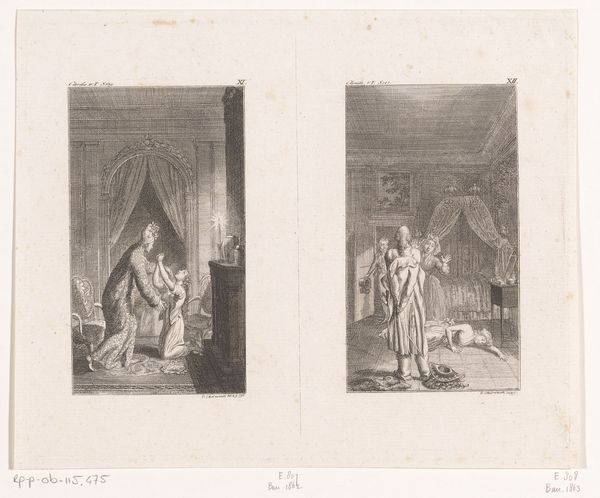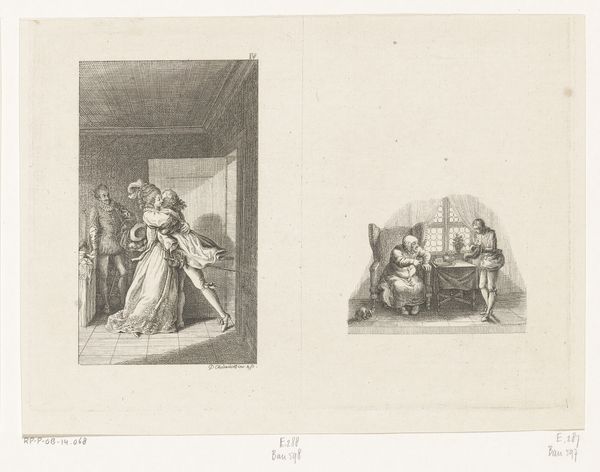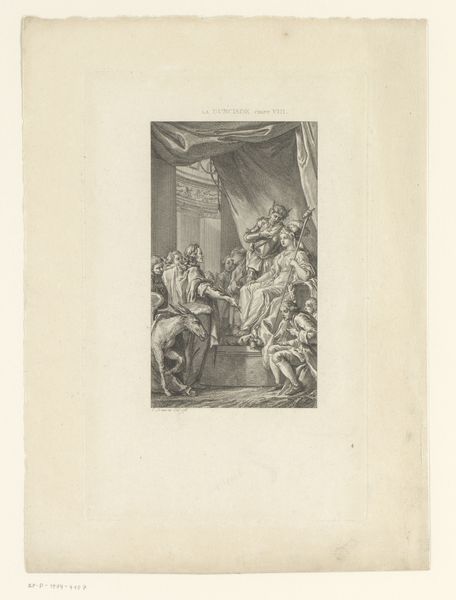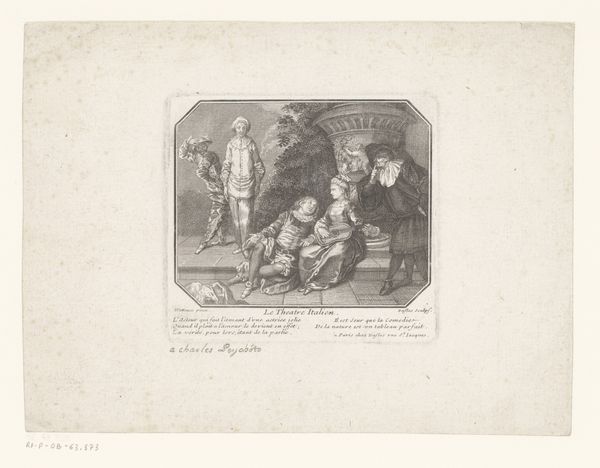
Morgus en Karly en vignet met Karly en Fragel's valk 1783
0:00
0:00
danielnikolauschodowiecki
Rijksmuseum
Dimensions: height 147 mm, width 180 mm
Copyright: Rijks Museum: Open Domain
Curator: Welcome. We’re looking at Daniel Nikolaus Chodowiecki's etching, “Morgus en Karly en vignet met Karly en Fragel's valk,” created in 1783. It’s currently held at the Rijksmuseum. Editor: Well, my initial thought is, these figures seem to be plucked from some old theatrical production. The staging feels deliberate, almost posed. Curator: Absolutely, there's a performative aspect at play. Look at the way the figures are arranged, particularly in the first scene – their stances, the torchbearer kneeling, it all speaks to staged interactions, hinting at power dynamics of gender and class within 18th-century society. It invites us to consider how identities were performed and perceived. Editor: Indeed, it draws me in! The etcher’s method seems intricate; the clear lines detailing outfits, especially the fabrics of what I assume are the wealthier subjects’ outfits – the labor embedded into this printing process mimics the meticulous detailing found in the very items it’s presenting. Curator: That’s a fascinating observation! Consider how the very act of creating prints allowed for wider distribution of these images. Disseminating certain notions of acceptable social behaviour, but also… who gets to be seen and in what light. Who gets to participate and who is omitted? Editor: It does have an intriguing circulation trajectory. You could hold it, disseminate it. Curator: Right. And, look closely at the second vignette, enclosed in a circular frame. Note the falcon and the barred window. What meaning might be derived here about liberty, and confinement within these portraits of people and time? Editor: Perhaps about possession too – the bird of prey. One can possess another life and control it with one's fist. Curator: Certainly, a commentary on ownership and dominance is present. It reveals intersectional systems of class and freedom; as the falcon represents authority and control that mirrors and affects individuals' own socio-political existence, impacting autonomy. Editor: Agreed. It is very much rooted in these themes. I can almost sense and feel the very materials that comprised their lifestyles. Thank you for showing it to me. Curator: The pleasure was mine; such artworks become so much more significant when understood and considered by way of their political, social, and individual components.
Comments
No comments
Be the first to comment and join the conversation on the ultimate creative platform.

